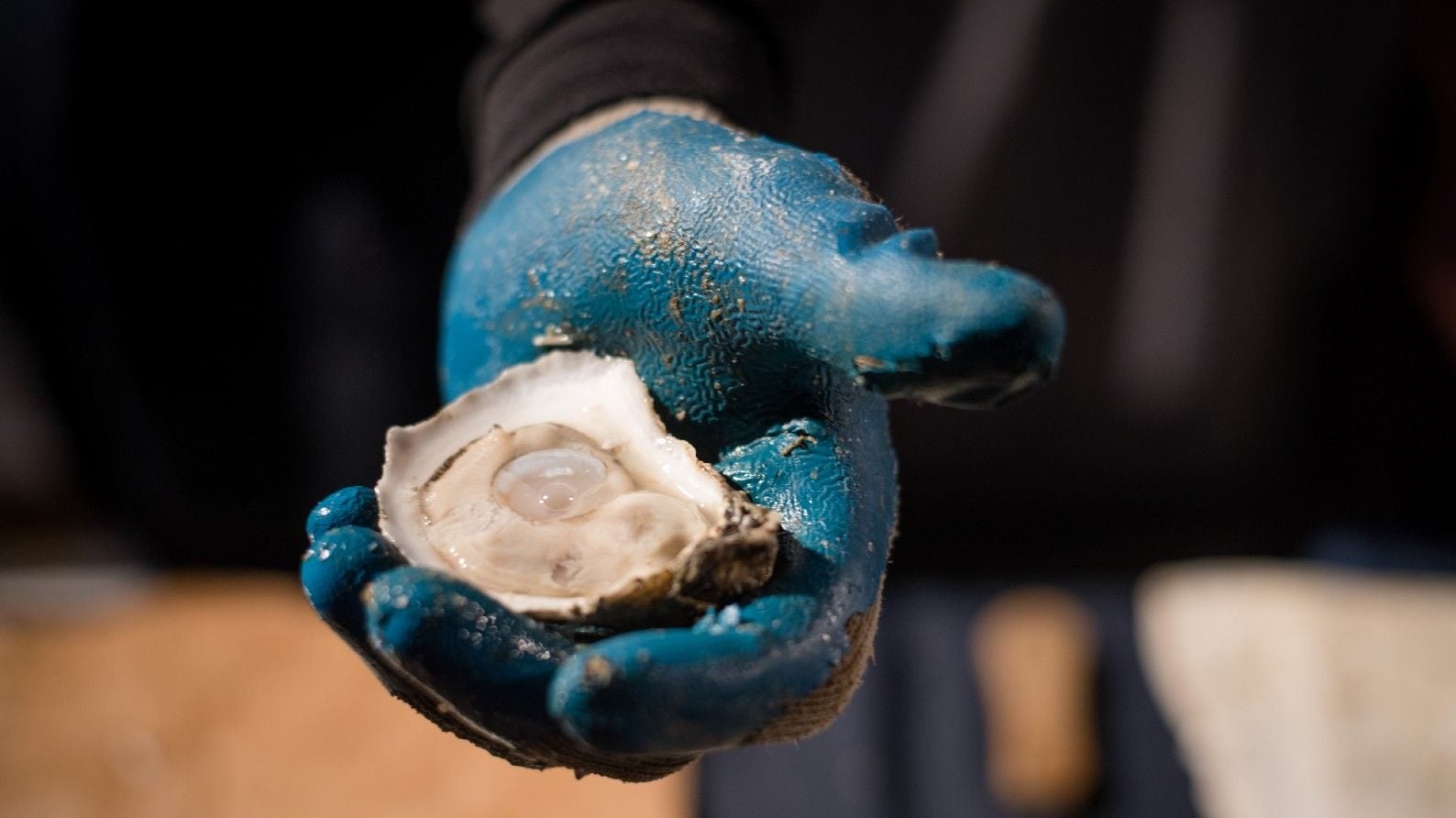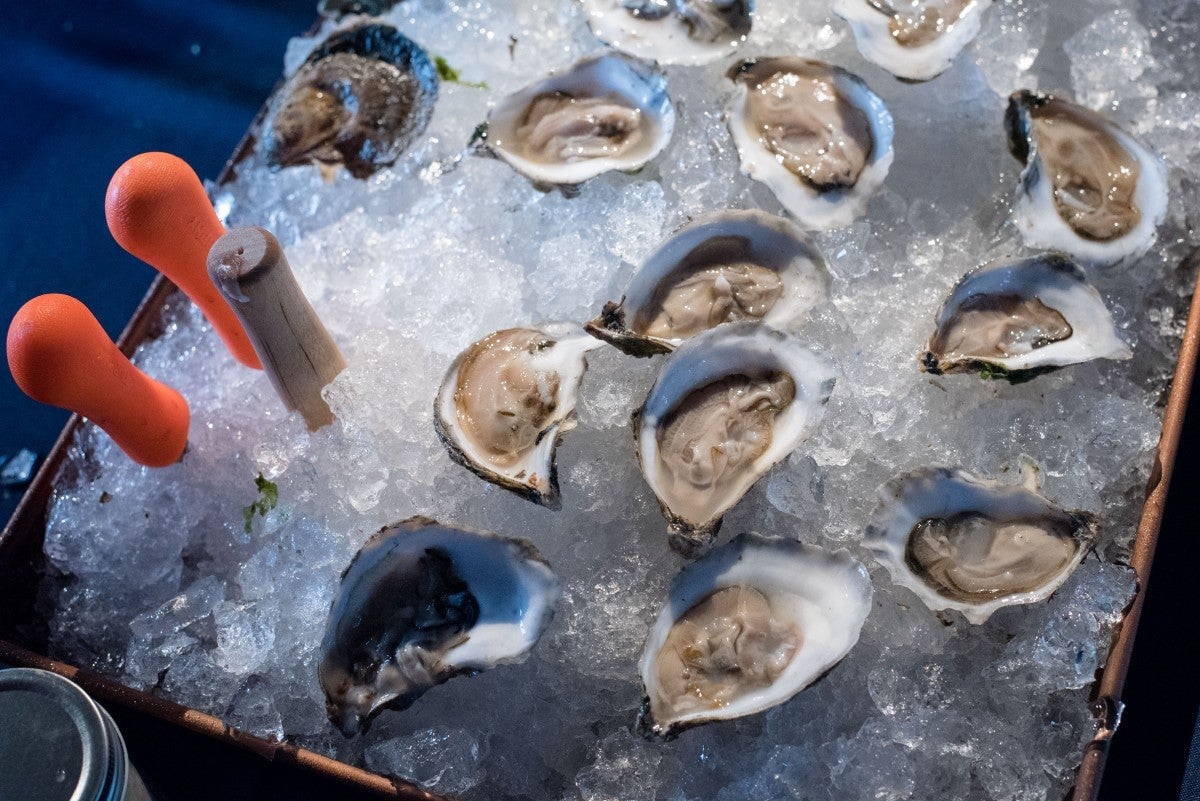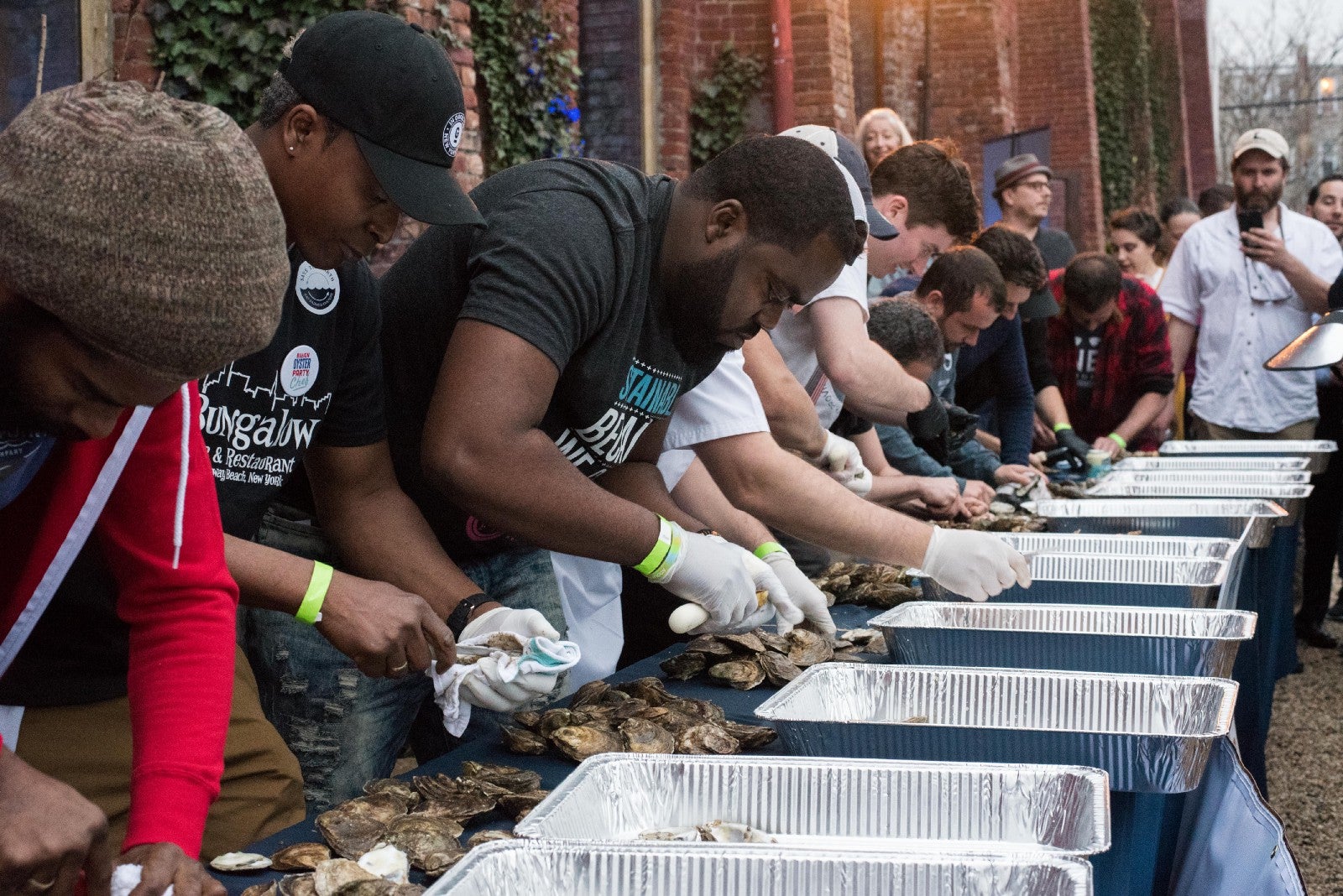For oyster farmers, the fight against climate change is personal
A great wine is the product of many things, from the strain of yeast used in fermentation, to the variety of wood used in the casks, to the soil, climate and topography of the region where the grapes are grown—factors collectively known as “terroir.” Terroir is the reason why wine made in Santa Barbara has a different quality than wine made just up the coast in Napa Valley. It’s also why wine shops are often organized according to region rather than varietal.


A great wine is the product of many things, from the strain of yeast used in fermentation, to the variety of wood used in the casks, to the soil, climate and topography of the region where the grapes are grown—factors collectively known as “terroir.” Terroir is the reason why wine made in Santa Barbara has a different quality than wine made just up the coast in Napa Valley. It’s also why wine shops are often organized according to region rather than varietal.
Of course, winemakers aren’t alone in the view that a food adopts the character of the place where it’s grown. Shellfish farmers have a similar fascination with the seas, believing the temperature, salinity, acidity and other features of the ocean endow clams, scallops, mussels and oysters with specific qualities—what’s known as “merroir.” The term is a play on “terroir,” “mer” meaning “sea” and “terre” meaning “land” in French.
“Oysters have become like wines,” said Bill Mook, who raises oysters along the Damariscotta River in Maine. “The thing about oysters is, when you eat an oyster, you are having a direct link to the water quality and the water that that oyster has been growing in and the food it has been eating. And so it creates this amazing array of flavors depending on where the oyster comes from.”
So, what happens to an oyster’s merroir when the water changes? What happens when the water grows warmer, more acidic, more hostile to creatures so exquisitely vulnerable to the whims of the ocean? And what happens to growers, like Mook, who depend on the bounty of the sea to feed their family and pay their mortgage?
“We’ve been in business since 1985. We’ve seen the environment change a lot over the years,” said Mook. “For quite some time, shellfish growers have been coping with some pretty serious problems that are caused by greenhouse gas emissions and climate change.”
Much of the carbon pollution from cars, ships, planes, factories and power plants is seeping into the oceans and reacting with chemicals in the water to deprive oyster larvae of the minerals they need to build their shells. Without their shells to protect them, the larvae perish. Mook, who grows and sells larvae—what farmers call “seed”—said a 2009 spike in ocean acidity crippled his operation.
“Our hatchery was quite severely impacted, and it cost us hundreds of thousands of dollars,” he said. “It’s a really, really anxiety-provoking situation, and it puts a lot of stress on, not only the owners, but the employees and everybody else whose livelihood depends on that water quality.”

While growers can take steps to protect larvae from ocean acidification, that is only one challenge posed by climate change. As the oceans heat up, water molecules move further apart, allowing oxygen molecules to wriggle free and escape into the atmosphere, thus depriving oysters of the oxygen they need. Warmer waters also spur the spread of diseases like Vibrio, a bacteria sometimes found in oysters that can be deadly to humans if consumed.
“We’re seeing warmer waters in our bays. We’re also seeing lower dissolved oxygen in bays. We’re seeing really bizarre plankton blooms in our bays,” said Joth Davis, a grower based in Washington, which produces more oysters than any other state. “My hunch is that something, very fundamentally, is changing.”
In addition to warmer, more acidic oceans, growers are also coping with more frequent and ferocious storms, which can wreak havoc on coastal waters. Heavy rainfall can flood rivers, which then deposit their surplus water in coastal estuaries, where oysters grow. The extra freshwater changes the salinity of the water, leaving oysters vulnerable to certain diseases.
In some cases, storms make coastal waters more saline. Hurricane Sandy, for example, fueled storm surges on Fishers Island, off the coast of Connecticut, that the left the waters at Sarah Malinowski’s farm too salty. “All of a sudden, our oysters had these diseases that they hadn’t had before,” she said. “Three months later, we pieced it together.”
A single bad storm can send ripples through the community. “The most stressful part is that we also have a hatchery, and we grow oyster seed for 70 to 80 other oyster growers, and it’s one thing if we have a complete fail, and we don’t have enough seed for ourselves, but is really stressful making sure you have enough seed for people who are depending on you,” Malinowski said.
Frustrated by climate change and worried about a future that looks increasingly bleak, Malinowski, Davis and a handful of their fellow oyster farmers recently joined Mook in forming the Shellfish Growers Climate Coalition, which is working with the Nature Conservancy to raise awareness about climate change and its effect on the oyster industry.
“It started a year and a half ago with three West Coast growers and four East Coast growers that I was able to get to agree to be on a steering committee,” said Mook, who is currently working to recruit more farmers to the coalition. “The shellfish coalition is a really an acknowledgement that the cost associated with climate change to our businesses is only going to increase, that we need to address the root cause of the problem, that our livelihoods are very dependent on having a healthy environment, and if we want to give our grandchildren and children the opportunity to carry on these businesses and work on the water, we need to step up to the plate.”

Many small oyster farms are family businesses passed down from generation to generation. “You get oysters in your blood,” Davis said. “We’re now in our 28th year of operations as a family shellfish farm. My son is now involved in the operation as general manager, and I would love it if there was another generation coming up.”
But Davis frets over what the future will bring. “Can my son continue to have this business thrive, as it did for me over the last 20 years, over the next 20 years?” he said. “I don’t know what things will look like—I don’t think anyone does—20 or 30 years from now, and that scares me a lot.”
Like Davis, Malinowski has relished in running a family business, which has allowed her to work alongside her husband and children. “All of our kids worked on the farm with us. Every vacation, every summer, every spare weekend our kids all worked with us, and that turned out to be a great way to raise a family,” Malinowski said. “We had lunch together every day.” Worried that way of life won’t be available to her kids, she’s looking to make a difference.
“We’re at a point in our lives where we’ve been doing this for 40 years, and we have a little more time now. We’re not just trying to make money to put food on the table… If we can do anything to slow the acceleration of global warming, we want to be part of it,” she said. “We want our grandkids to say that we were part of the solution and not the problem. We want them to be proud of us.”
For Malinowski and her fellow growers, climate change is personal, a matter of protecting their farms, their families, their legacies—their merroir. Asked about the character of her oysters, Malinowski used words like “salty,” “crisp,” and “effervescent.” Mook said the water of the Damariscotta River makes his brood “plump” and “briny.” Davis said the plankton swimming about his farm render the oysters “sweet” and “clean.”
“It is beyond producing a gourmet product,” he said. “They’re the best darned oysters in the world.”
This post originally appeared on Nexus Media.